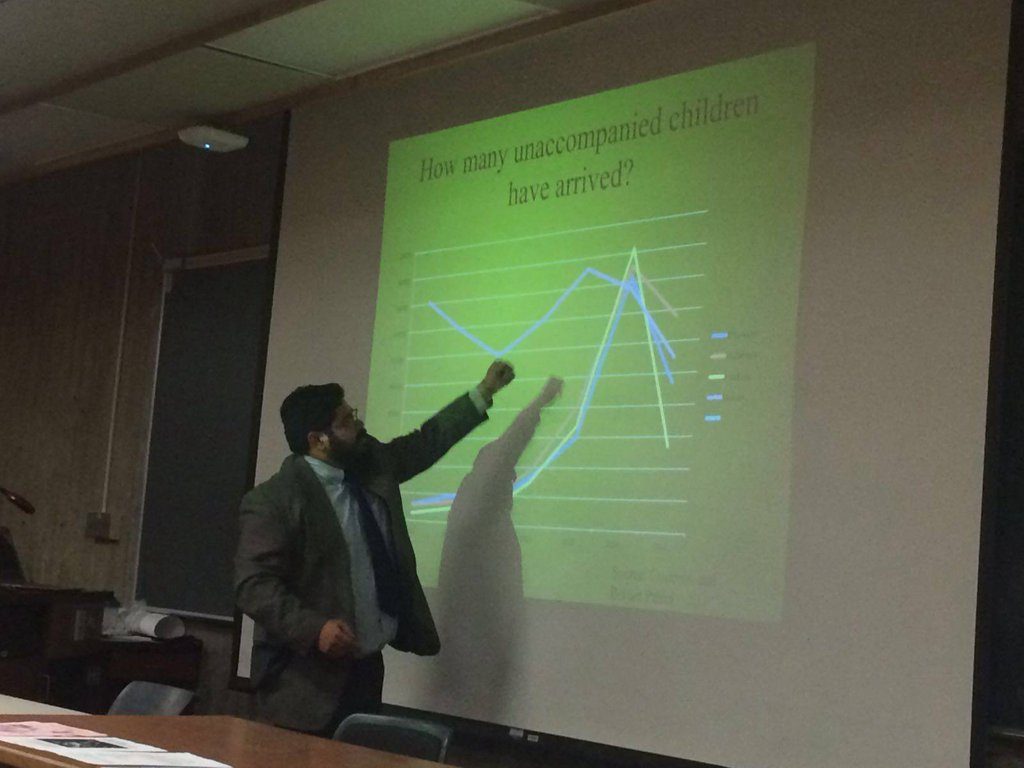Journalistic Coverage on Unaccompanied Children
by Ricardo J. Valencia, PhD candidate School of Journalism and Communication
In 2015, I received a CLLAS summer research grant for research on the journalistic coverage of unaccompanied children in the U.S. southern borders. I was interested in the relations between the population of Central American-born immigrants and the news coverage during summer 2014. In the period between May and July 2014, the media covered how thousands of children and families were crossing the U.S. southern borders. Those families arrived from Mexico, but especially from El Salvador, Guatemala, and Honduras. This situation forced President Barak Obama to request from Congress hundred of millions of dollars to deal with a situation Republicans called an “administration made” disaster. In that context, both Democrats and Republicans were in open contest towards the 2014 mid-term elections.

For this research, I selected two groups of newspapers: Group 1 consisted of newspapers in cities with high concentrations of Central Americans (The New York Times and Los Angeles Times), and Group 2 consisted of two newspapers in cities with low concentrations of Central Americans (The Oregonian and The Seattle Times). I conducted a content analysis on more than 150 news pieces and 900 sources of information. Information sources are those who “speak” in the coverage.
The most frequent type of source in both groups of newspapers were Non-Latin sources, especially the ones connected to the political debate in Washington D.C. In Group 1, 46.3 percent were Non-Latin sources, 29.9 Latinas and the rest unnamed. In Group 2, 44.7 percent were Non-Latin sources, 25.7 percent Latin, and the rest anonymous sources. However, there was a significant difference between the two groups of media in one aspect: newspapers of Group 1 placed more often the news about the phenomenon on their front pages, while in Group 2, this action was a rarity.
In short, we can see that 1) there is national pattern of source selection. Publics in Los Angeles, New York. Seattle, and Portland accessed similar type of sources. And 2) there is a relation between the concentrations of immigrants and the relevance that the media provide to this phenomenon. In this case, media in big and diverse cities such as Los Angeles and New York gave more prominence to the spike of the number of unaccompanied children than in places with fewer concentrations of Central Americans such as Oregon and Washington State.
I interpret these finding in two senses. The first one is that national media influence the agenda of local media, especially due to budget constraints. The Oregonian and The Seattle Times depend on the reproduction of news produced by other media such as The New York Times, The Washington Post, Associated Press, and the Los Angeles Times. Their staffers wrote only two out of 56 articles published in The Oregonian and The Seattle Times. In Los Angeles Times and the New York Times, the tendency is the opposite. Secondly, it seems that reporters and editors are aware of the racial makeup of their communities and by looking at their front pages, this aspect becomes clear.
—by Ricardo J. Valencia, PhD student, UO and an expert in Strategic Communications, PR, Public Diplomacy, U.S. Media and Foreign Policy. He won third place in the Association for Education in Journalism and Mass Communication (AEJMC) Minorities and Communication’s student research paper competition for his study, partially funded by CLLAS, “At the border: A comparative examination of U.S. newspaper coverage about unaccompanied immigrant minors.”
